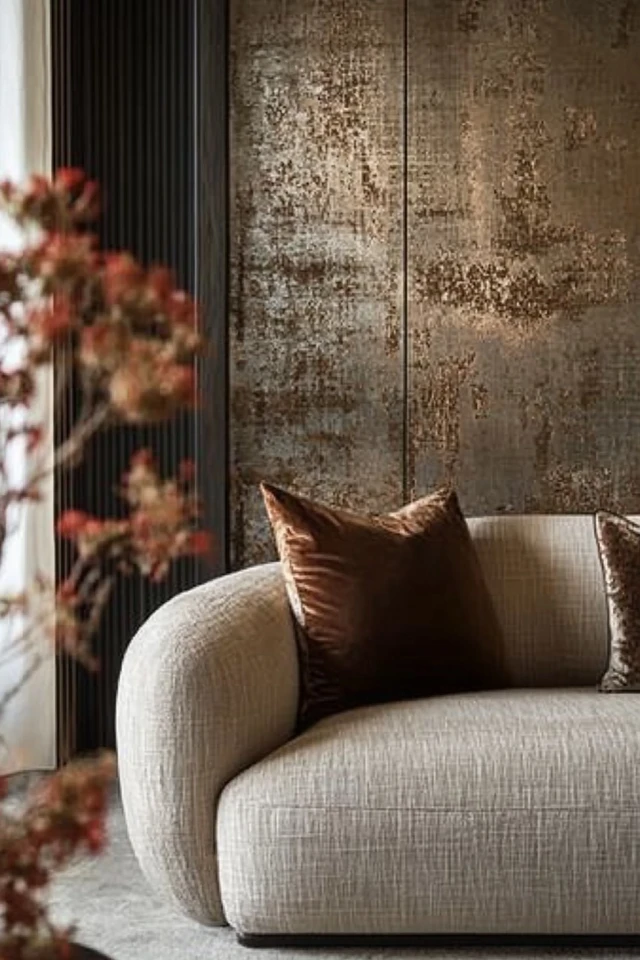Layering textures is like painting with depth—it transforms a flat, lifeless space into an inviting, luxurious retreat. When I first learned the power of textures, it was during my design school days. One assignment had us create a mood board entirely with textiles, and wow, did that open my eyes! Suddenly, a room wasn’t just about color or furniture; it was about how materials like velvet, wool, and wood could work together to create a multidimensional masterpiece. Fast forward to today, layering textures has become one of my go-to design secrets for achieving an aesthetic room that feels rich and harmonious.
If you’ve ever walked into a space and immediately felt comforted, grounded, or inspired, chances are the textures were working behind the scenes to elicit that reaction. Let’s dive deep into the art and science of texture layering, with actionable steps, tips, and real-world examples to help you create an aesthetic room that exudes charm and sophistication.
1. Understanding the Role of Texture in Room Design
Why Texture Matters
Texture is what gives a room its “feel,” both literally and visually. Smooth, sleek surfaces like glass and metal create a modern, clean aesthetic, while rougher materials like linen, brick, or reclaimed wood add warmth and character.
Emotional Impact of Textures
- Soft textures (like velvet or faux fur) evoke comfort and luxury.
- Rough textures (like natural stone or jute) ground the space and add an organic touch.
- Contrasting textures create visual interest and prevent monotony.
I once worked on a minimalist bedroom design where we used polished concrete floors and paired them with a plush, high-pile rug. The contrast between hard and soft was transformative—it turned a cold, modern space into a warm haven.
2. Starting with a Base Texture
The Foundation of Your Space
Your base texture is the one that covers the largest surface area in your room—usually walls, floors, or large furniture pieces.
Choosing the Right Base Texture
- Walls: Painted drywall, exposed brick, or textured wallpaper can set the tone.
- Floors: Hardwood, tile, or carpet provides a foundational texture that influences the room’s mood.
- Furniture: A sofa with a linen or leather finish can act as your starting point.
For a recent project, I used matte plaster walls as the base texture, which provided a subtly textured backdrop for layering softer elements like textiles and throws.
3. Layering Textures with Textiles
Why Textiles Are Key
Textiles are the easiest and most versatile way to add layers of texture. They’re also budget-friendly and can be swapped seasonally for variety.
Key Textiles to Incorporate
- Throws and Blankets: Drape a chunky knit throw over a leather armchair or at the foot of your bed.
- Cushions and Pillows: Mix and match materials like velvet, linen, and faux fur for depth.
- Rugs: Layer a smaller, patterned rug over a larger neutral one for added dimension.
In my own living room, I layered a Moroccan wool rug over sisal flooring and added velvet pillows to my linen sofa—it’s cozy yet sophisticated.
4. Contrasting Hard and Soft Textures
The Beauty of Contrast
Pairing hard and soft textures is one of the most effective ways to achieve balance in a room. Too many soft textures can feel overly casual, while too many hard surfaces can feel stark and uninviting.
How to Pair Hard and Soft Elements
- Pair wooden furniture with soft cushions or sheepskin throws.
- Balance glass or metal accents with fabric elements like curtains or upholstered chairs.
- Use woven baskets or jute rugs to add an earthy touch to spaces dominated by sleek materials.
One client had a modern dining table with a glass top that felt a bit cold. We softened the look by adding linen slipcovers to the chairs and placing a woven centerpiece on the table.
5. Mixing Natural and Synthetic Materials
Creating a Balanced Look
Natural materials like wood, stone, and cotton exude warmth and authenticity. Synthetic materials like acrylic, glass, or resin add a contemporary edge. The trick is to balance the two.
Ideas for Blending Materials
- Pair a wicker chair with a sleek acrylic side table.
- Use ceramic vases alongside metal candlesticks on a mantle.
- Combine leather upholstery with metallic decor for a modern-luxe feel.
In one bedroom design, we combined a reclaimed wood headboard with crisp, synthetic linen bedding. The interplay of rustic and polished was striking.
6. Incorporating Seasonal Textures
Adapting Your Room Year-Round
Textures can be seasonal! Adjusting them can keep your space fresh and inviting throughout the year.
Seasonal Texture Ideas
- Winter: Layer heavy knit throws, faux fur pillows, and wool rugs.
- Summer: Opt for light cotton throws, linen cushions, and airy curtains.
During the holidays, I swap my light cotton blankets for a rich, cable-knit throw and add a sheepskin rug to my bedroom for an extra-cozy vibe.
7. Using Textured Accessories
The Power of Small Details
Smaller decor pieces can add impactful layers of texture without overwhelming the space.
Accessory Ideas to Try
- Ceramics: Use handmade pottery with a rough or matte finish.
- Books: Stacked books on a coffee table add visual weight.
- Candles and Trays: Opt for textured or metallic finishes.
I once styled a console table with a mix of a hammered brass tray, a glossy ceramic vase, and a weathered wood bowl—it became the perfect vignette.
8. Playing with Scale and Patterns
Adding Complexity to Textures
Don’t forget to consider scale and patterns when layering textures. A mix of large and small-scale textures ensures the room doesn’t feel flat.
How to Vary Scale
- Use large, smooth surfaces like a leather sofa as a base.
- Add smaller, detailed textures, such as a patterned throw or embroidered pillow.
- Incorporate medium-scale items like a textured lamp base or a woven basket.
In one living room, we paired a large-scale shag rug with smaller-scale textured pillows and a medium-scale herringbone throw. The result was a perfectly balanced composition.
9. Incorporating Light as a Texture
The Overlooked Element
Light interacts with textures to enhance their impact. Natural light highlights organic materials, while artificial lighting can create drama.
Tips for Textural Lighting
- Use light and shadow to emphasize textured walls or fabrics.
- Choose fixtures with a tactile quality, like a rattan pendant or glass lampshade.
A client had exposed brick walls in their loft, which we accented with uplighting. The shadows emphasized the texture beautifully.
10. Creating a Cohesive Look
Bringing It All Together
Once you’ve layered textures, the key is to ensure they work together harmoniously.
How to Maintain Cohesion
- Stick to a consistent color palette to unify textures.
- Use repetition, like multiple woven baskets or similar wood tones, to tie elements together.
- Avoid over-layering—sometimes less is more.
In a recent design, we used a soft neutral palette with varying textures: velvet cushions, linen drapes, and a rattan light fixture. The consistency in color made the textures feel cohesive, not chaotic.
Picture Gallery
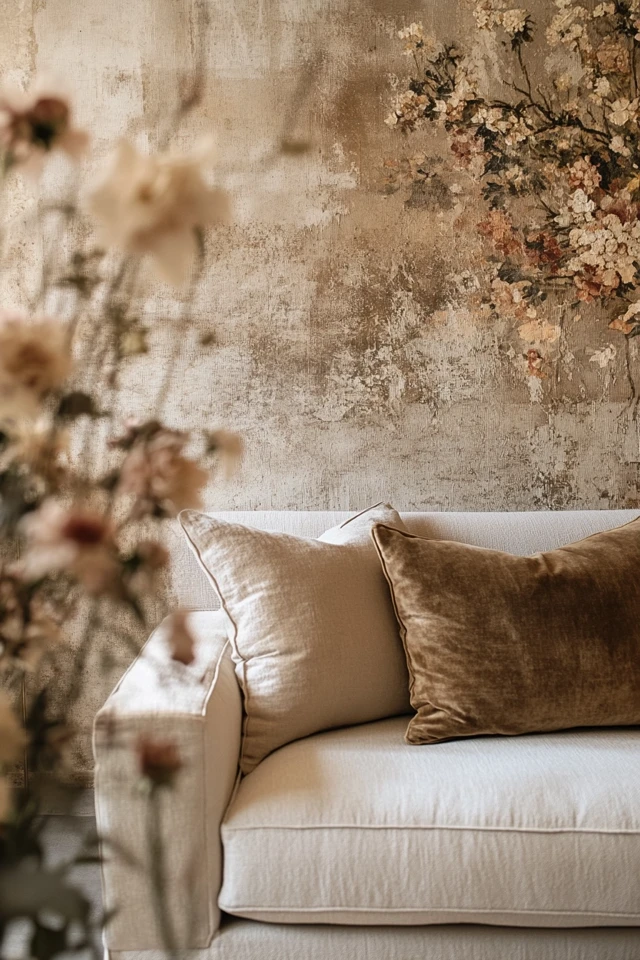
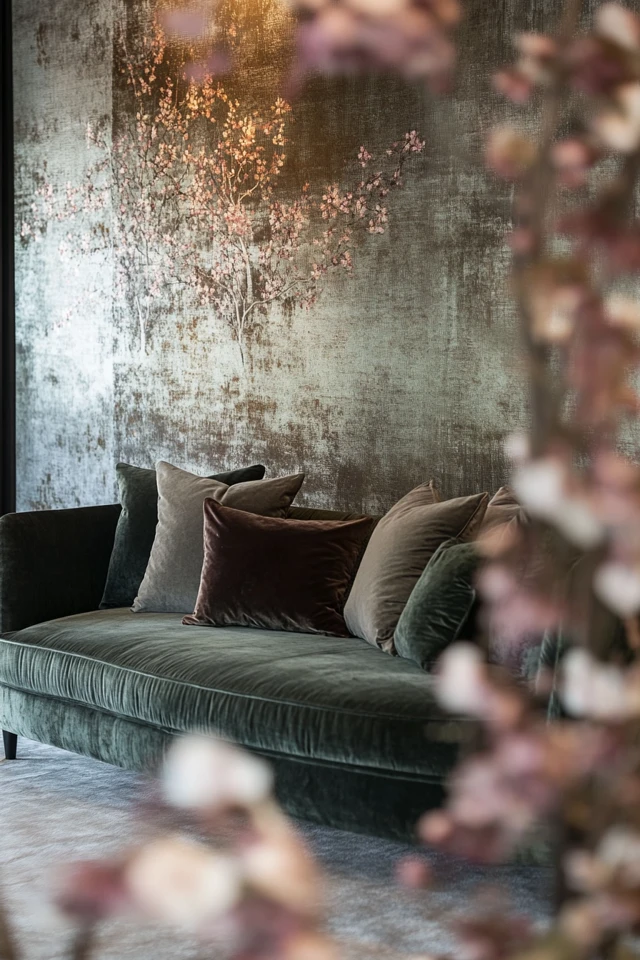
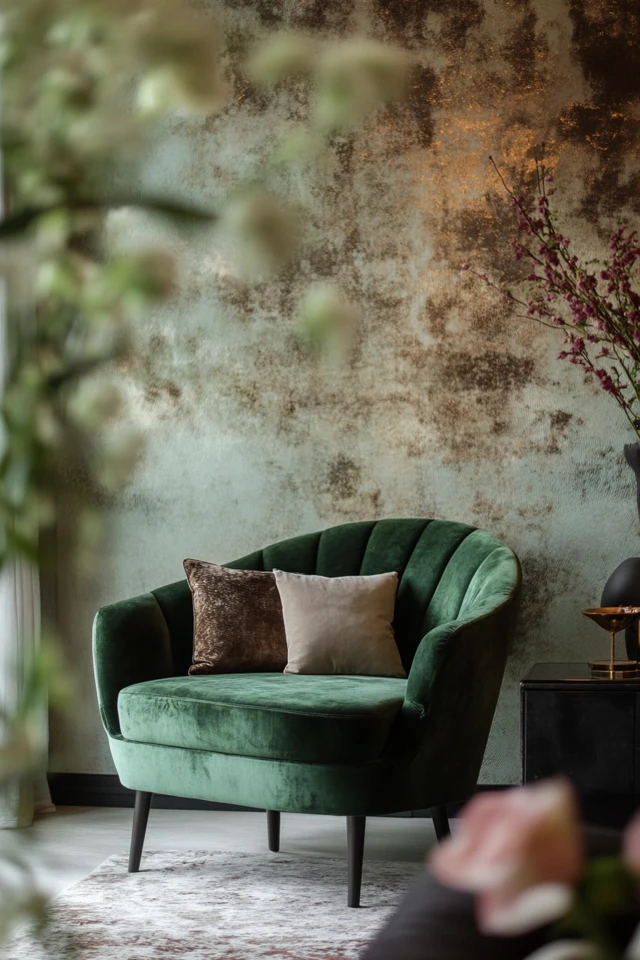
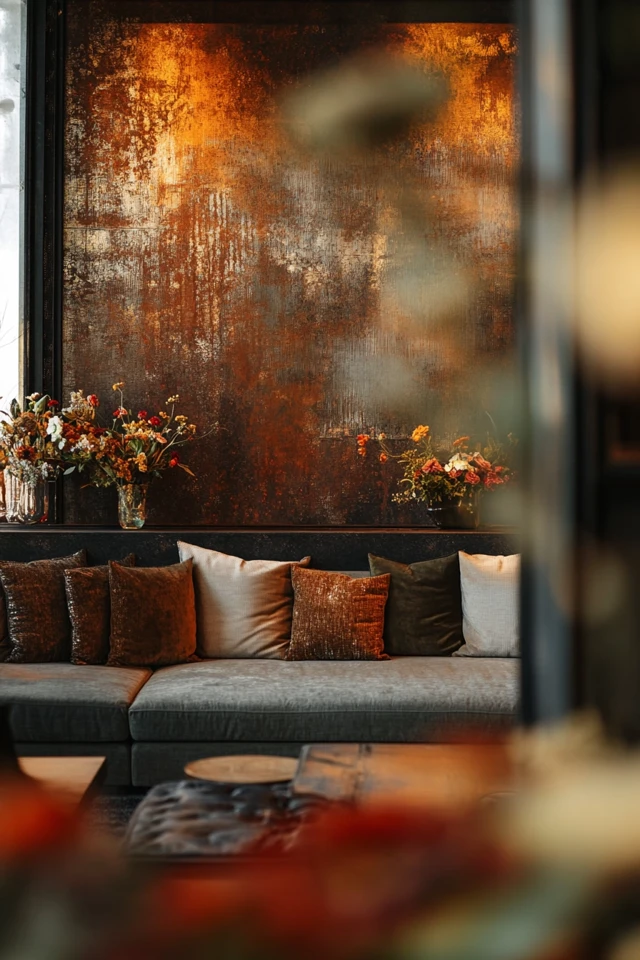
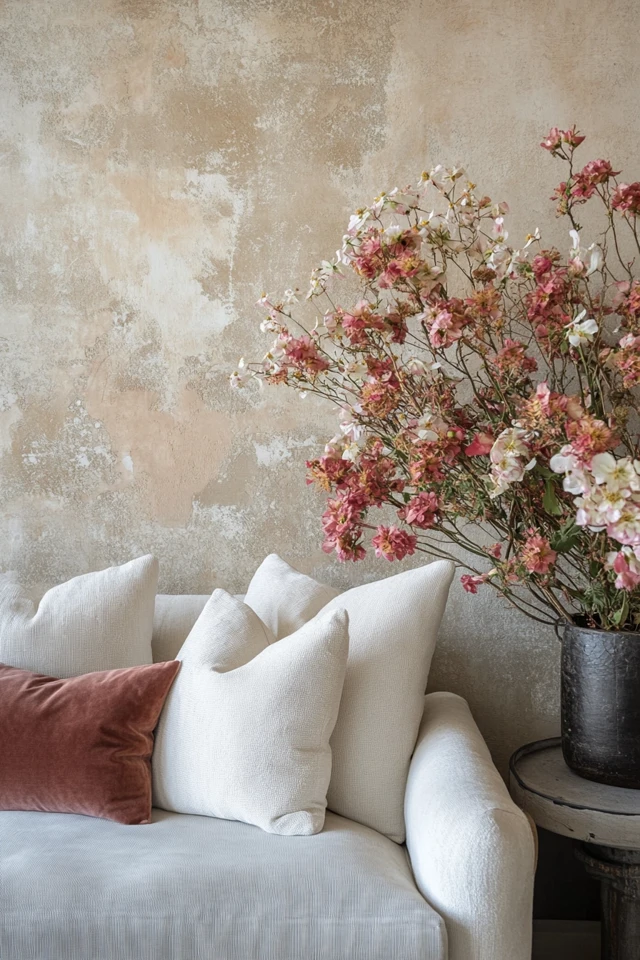
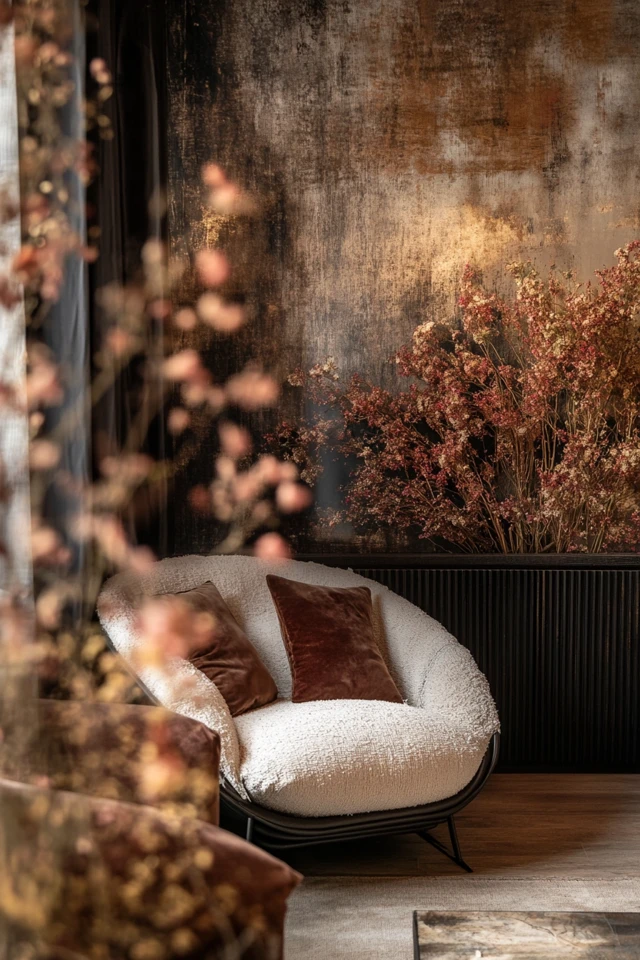
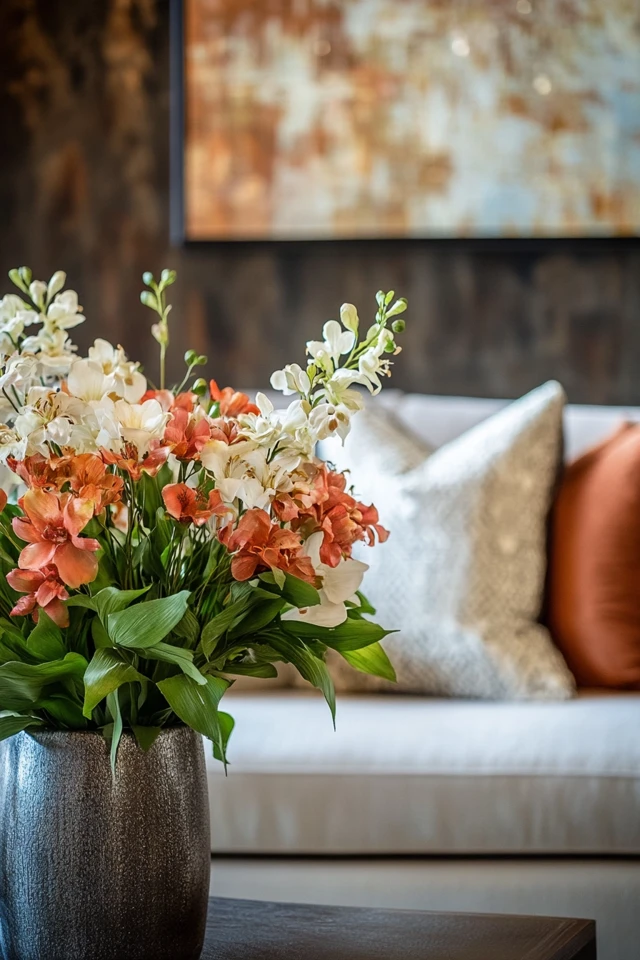
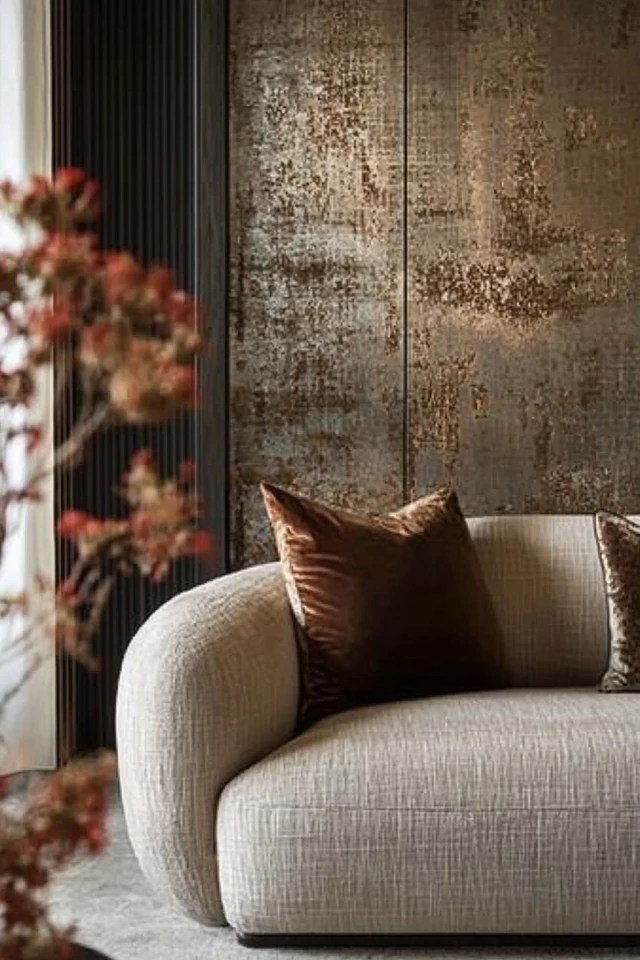
Conclusion
Layering textures is more than a design technique—it’s an art form. It’s about understanding how different materials, patterns, and finishes work together to create depth, comfort, and style. The beauty of texture lies in its ability to evoke emotion and enhance the sensory experience of a room.
When I look back at my earliest attempts to design spaces, I realize how far I’ve come in embracing the richness of textures. It’s not just about throwing a blanket over a chair or adding a rug; it’s about curating elements that tell a cohesive story. Whether it’s the rough-hewn charm of a reclaimed wood table or the plush indulgence of a velvet cushion, textures bring spaces to life.
So go ahead—experiment with textures, layer them thoughtfully, and create a room that’s as beautiful to the touch as it is to the eye. Once you master this skill, every space you design will radiate sophistication and aesthetic appeal.
FAQ
What is the easiest way to layer textures in a room?
Start with a base texture (like your walls or floors) and add layers with textiles such as rugs, throws, and pillows. Balance hard and soft textures for depth.
How do I balance rough and smooth textures?
Pair contrasting textures strategically. For instance, combine a smooth leather sofa with a chunky knit throw or soft linen curtains.
Can I layer textures in a small room?
Absolutely! In smaller spaces, opt for lighter, airy textures and avoid overly bulky layers. Use mirrors and glass elements to prevent a cluttered look.
How do I choose a cohesive color palette when layering textures?
Stick to 2–3 main colors and use varying shades and tones to add interest. Consistent colors help unify different textures.
Do textures work with all design styles?
Yes! From minimalist to bohemian to industrial, every style benefits from thoughtful texture layering. Tailor the materials and finishes to suit your aesthetic.

